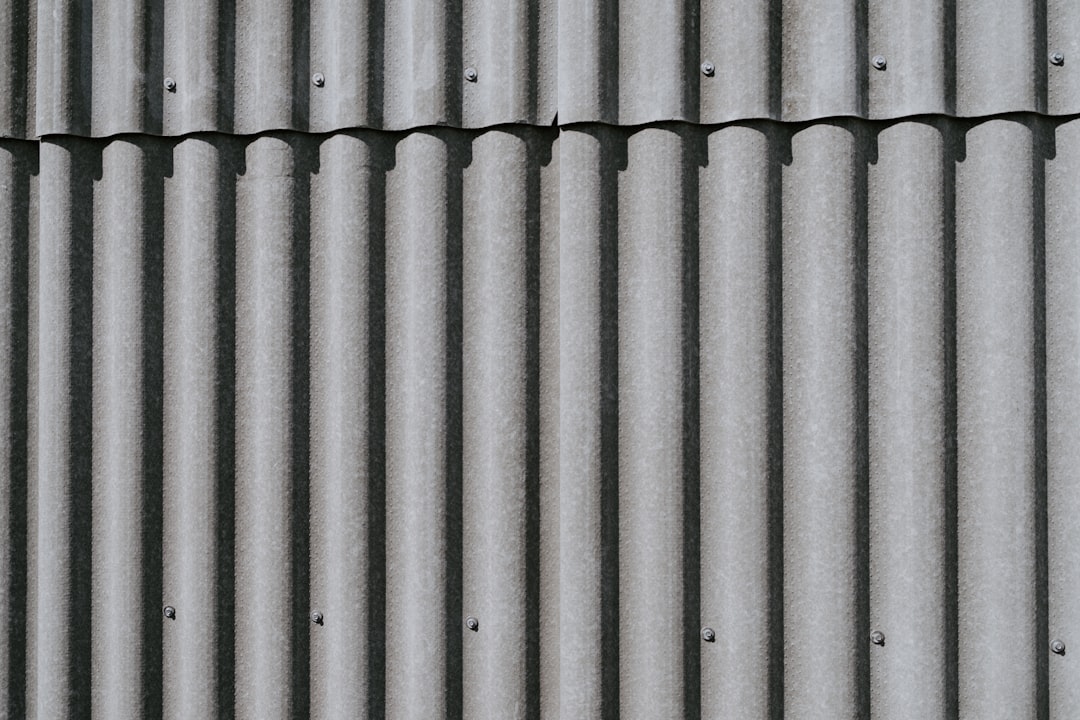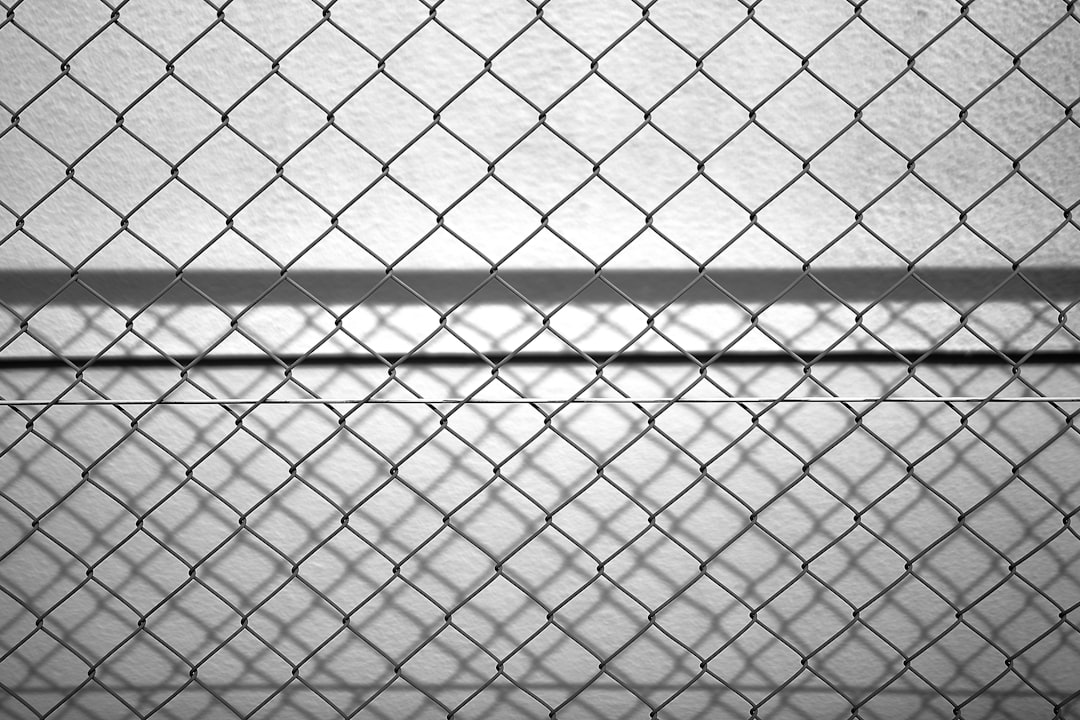

Engage prospects with a scan and streamline customer engagement with FREE QR code marketing tools by Sona – no strings attached!
Create a Free QR CodeFree consultation

No commitment

Engage prospects with a scan and streamline customer engagement with FREE QR code marketing tools by Sona – no strings attached!
Create a Free QR CodeFree consultation

No commitment
QR codes have become a powerful tool for connecting offline engagement with online action. For fence staining services businesses, they provide an efficient way to generate leads, engage potential customers, and simplify maintenance conversations without needing an app or complicated technology.
Fence staining companies often use physical marketing such as yard signs, direct mail, truck wraps, and brochures, but these approaches struggle to capture direct digital interest. High-value prospects may notice your sign, but without an easy way to follow up, their intent goes untracked. QR codes turn these static touchpoints into actionable entry points: collecting reviews via this Google reviews guide, sharing fence maintenance tips, or enabling immediate quote requests right when interest peaks.
This article shows how QR codes are changing how fence staining service providers attract, nurture, and convert leads. Learn effective tactics, technology, and workflows that transform every job site, estimate, and customer interaction into measurable growth opportunities while integrating offline engagement with your CRM for better follow-up and ROI.

For fence staining contractors, manual and paper-based methods make it difficult to capture every high-intent lead. Even eye-catching signs or flyers can allow interested customers to slip away if they are not ready to call. QR codes bridge this gap by letting prospects instantly scan to request quotes, read reviews, or access maintenance tips at the moment they decide. This quick, convenient access reduces friction and prevents lost leads. It also meets homeowners where they are: in the yard, near the mailbox, or by the curb where dialing a phone number feels like a chore.
Replacing outdated analog workflows with QR-enabled journeys improves response speed and conversion quality. Instead of hoping people type a URL from a door hanger, a QR code routes them directly to a mobile-friendly quote form. Instead of collecting paper review cards that rarely get returned, a QR code on invoices takes customers straight to the review site of your choice. With a QR management platform such as Sona QR, you can route scans to different destinations by season or offer and track engagement by placement and time of day. You can also integrate scan events into your CRM so no hand-raiser goes unnoticed.
To make this work at scale, define clear success metrics and instrument your funnel from scan to revenue. Track scan-to-visit rate, visit-to-form completion, and form-to-booking conversion. Compare performance by placement such as yard sign at job site versus direct mail in a neighborhood. Use A/B tests for different calls to action like Scan to book a free estimate versus Scan to see before and after photos, and keep the winner. Over time, you will build a data-backed playbook that raises conversion rates across your physical marketing.

Offline marketing in fence staining is often disconnected from timely lead capture. Prospects see your logo, but there is no clear path to take the next step. QR codes provide instant channels for homeowners to request service, read reviews, or learn about options, all trackable in real time. Every visitor who does not complete a form is potentially lost, and QR codes make capturing these leads effortless by simplifying what to do next and showing tangible value.
Dynamic QR codes add flexibility that matches a seasonal business. When spring demand spikes, point scans to a priority booking calendar with rush availability. During off-peak months, send scanners to maintenance guides and protective recoat offers. With a platform like Sona QR, you can update destinations without reprinting a single sign or brochure. You can also capture scan data by neighborhood, placement, and device type to understand which combinations of message and media produce the strongest results.
Beyond simple convenience, QR codes give fence staining teams the visibility they have been missing. Yard signs, brochures, and vehicle wraps are powerful, yet traditionally untrackable. QR analytics show which physical assets and locations actually drive quote requests and bookings. This transparency helps you shift budget toward tactics that move the needle and away from those that merely look good.
Different QR formats align with different goals in a fence staining buyer journey. While any QR can link to a webpage, using the right format improves the experience and increases the likelihood of conversion.
Dynamic QR codes are best for campaigns that will evolve or need measurement. Static codes can work for evergreen assets like a truck wrap that simply points to your homepage, but losing the ability to update or track results is a significant downside. For performance-driven fence staining teams, dynamic codes managed in a platform like Sona QR offer the control and visibility required to optimize over time.

Fence staining businesses often lack data on which locations or materials generate leads. Placing unique QR codes on job-site yard signs, brochures, vehicle decals, and door hangers turns offline interest into actionable data. Use separate codes for different neighborhoods to see where demand clusters. Compare signage at the front of a subdivision with signs near community parks to assess foot traffic versus driveway traffic. The insights will show you where to double down. For broader strategy, see fence company marketing.
Look beyond acquisition to customer lifetime value. Adding QR codes to invoices, service reports, and follow-up emails prompts timely reviews and seasonal maintenance bookings. A Scan to schedule your maintenance recoat reminder 24 months after a job can capture repeat business before UV damage sets in. When a customer scans, your CRM can mark them as due for maintenance and trigger appropriate outreach. This reduces churn, increases average revenue per client, and provides predictable off-season work.
Direct mail remains a staple for local home services. Pair postcards with QR-powered landing pages tailored by subdivision or homeowner type. Offer a neighborhood-exclusive discount, and pre-fill forms with the neighborhood name so the CTA feels customized. Because each postcard batch gets its own QR, you will finally have precise response rates at the block level. Over several campaigns, you can refine imagery, messaging, and offer to match what resonates in each area. For extra ideas, explore these marketing ideas.

QR codes shine when they connect physical proof of quality to a frictionless action. The following use cases align directly with typical customer moments in fence staining.
Each of these use cases can be measured. Track scans, form starts, and completed bookings to quantify lift in engagement and conversion. Over time, this creates a repeatable framework to scale your most productive touchpoints.
Missed or untracked leads are a major pain point for fence staining growth. QR scans signal levels of interest from early research to post-purchase. By tagging scans with funnel stage and syncing them with your CRM, you can build high-value audiences for retargeting that reflect real behavior, not assumptions. This increases relevance and keeps your brand present as prospects move toward a decision. For signal-based targeting strategy, read Sona’s blog post titled The Essential Guide to Intent Data.
Segment your audience based on the QR’s purpose and placement. Someone who scans a job-site sign is likely a nearby homeowner with a fence in similar condition. A scan from a maintenance tips card indicates an existing customer due for a recoat. A scan from an HOA email suggests a decision-maker evaluating vendors for a larger project. With Sona QR, each code can automatically apply tags like channel, placement, and intent that sync to tools such as HubSpot, Salesforce, and Meta Ads.
Use these distinctions to personalize follow-up. For example:
Feed these segments into your email, SMS, and ad platforms. A scan can trigger a one-to-one text acknowledgement from your estimator, enroll the contact in a nurture sequence with before and after images, and add them to a location-based custom audience for low-cost retargeting. This level of precision raises conversion rates while keeping costs in check. For execution, see Sona’s Playbook titled Intent-Driven Retargeting.
Fragmented outreach leads to missed connections and wasted spend. Adding QR codes across all touchpoints, from yard signs and banners to direct mail and invoices, blends physical and digital marketing. Each scan is a real-world signal that points to measurable intent. By centralizing code management in Sona QR and syncing scan data with your CRM, every offline activity informs your audience segments and follow-up messaging.
Here are examples tailored to fence staining services:
QR codes serve as the offline onramp to your digital marketing engine. They also unlock a new layer of data collection across channels that were once difficult to measure. With a centralized platform like Sona QR, you can manage all your codes, monitor performance, and sync scan data with your CRM and ad platforms, ensuring that every channel contributes to a cohesive buyer journey.
Define the specific outcome you want. For fence staining, examples include driving spring bookings, filling a cancellation calendar, collecting Google reviews, or promoting premium stain upgrades before a scheduled visit. Each use case should connect directly to a business goal such as increasing quote requests, lifting close rates, or growing repeat revenue.
Identify the audience, their context, and the desired action. A homeowner walking the dog near your job site needs a fast way to book an estimate, while a recent customer reading your invoice is more receptive to a review request or a maintenance plan. Document the use case as a one-line statement like Yard sign code to instant estimate form with pre-filled neighborhood field so the entire team understands the intention.
Choose dynamic codes for any asset that requires tracking, updates, or A/B testing. Dynamic codes let you change destinations without reprinting and activate features like retargeting pixel injection and device-level analytics. Static codes are acceptable for evergreen placements that do not change, such as a QR that simply saves your vCard, but you will forfeit data and agility.
Match format to action. A web link to a mobile-first landing page is ideal for quotes and galleries. A form link simplifies data capture. SMS or email pre-fill helps those who prefer a quick message. For partners such as deck builders or landscapers, a vCard code makes it easy to save your contact for referrals.
Design for scannability in the environments where your codes will live. Yard signs need high-contrast codes at least 1.5 inches across with a quiet zone around the code. Direct mail can include a smaller code since recipients hold it close. Always pair the code with a clear CTA like Scan for instant estimate and a benefit like 2-minute form with photo upload.
Test under real-world conditions. Check scans from various distances, angles, and lighting conditions, including glare from sun and headlights. Test with both iOS and Android default camera apps. Confirm that the landing page loads quickly and is easy to use on mobile with large tap targets and minimal required fields.
Roll out your codes on assets that meet prospects where they are and when they are most receptive. Start with job-site yard signs, door hangers, postcards, truck wraps, and invoices. For HOA and commercial outreach, add codes to proposal packets and meeting handouts. Align code placement with likely phone-in-hand moments, such as at the mailbox, on the driveway, or during a neighborhood stroll.
Stagger deployment to learn quickly. Launch in a few neighborhoods with distinct messages or offers, then compare results. Expand the winning creative and placement. Keep an eye on code durability since outdoor signs can fade or collect grime. Reprint early if scan rates drop due to wear.
Use tools like Sona QR to track scans by placement, neighborhood, time, and device. Connect Sona QR to your CRM so each scan either creates a new lead or enriches an existing contact with a timeline event. Review funnel performance weekly: scan to landing page, landing page to form start, and form start to booking. Identify drop-off points and hypothesize why they occur.
Run controlled tests. Try two calls to action, two gallery thumbnails, or two form lengths. Test offers by season and neighborhood. If a particular truck wrap code produces scans but few bookings, experiment with a different destination like a testimonial video, then present the quote form after the video to build trust first.

Tracking offline campaign impact has always been difficult. QR analytics change that by showing which touchpoints, such as yard signs or mail, turn into quote requests and bookings. With Sona QR, every scan updates a centralized dashboard with time of scan, location, device type, and campaign source. Connecting Sona QR to Sona.com, an AI-powered marketing platform that turns first-party data into revenue through automated attribution, data activation, and workflow orchestration, and your CRM gives you a full picture from first scan to closed job.
The goal is not only to count scans but to understand behavior and business outcomes. Did the scan lead to a form fill, a call, or a scheduled estimate? Did that estimate convert to a job, and at what value? You can track scan-assisted revenue by matching scan events to contacts and opportunities in your CRM, then viewing contribution by campaign, asset, or neighborhood. This makes it possible to defend spend on print and signage with performance data. For measurement fundamentals across channels, see Sona’s blog post titled The Essential Guide to Offline Attribution.
With Sona QR and Sona.com, you can go further by injecting pixels on QR destinations to build retargeting audiences, then attributing ad-influenced conversions back to QR-originated journeys. Sona’s Buyer Journeys unify fragmented interactions across scans, website visits, ad clicks, emails, and CRM milestones, helping your team understand progression and allocate budget to the most efficient touchpoints.
QR initiatives work best when they are precise, measurable, and connected to a clear next step. Focus on practical deployment and automation that turns scans into outcomes without manual effort or delays.
These practices keep your QR ecosystem purposeful and performance-driven. By building a consistent scanning habit in your audience and team, you lower friction across the entire customer lifecycle.
Examples from the field show how small changes in placement and messaging produce outsized results. One fence staining company added QR codes to job-site fences on a removable tag, making it easy for neighbors walking by to request an estimate. In one spring campaign, this tactic contributed to a 45 percent increase in leads compared to similar neighborhoods without tags. The secret was a simple CTA that matched the moment: Love this finish? Scan to get a quote for your fence.
Another team printed QR codes on invoices that linked to a pre-populated review page with direct buttons for Google and Facebook. Because the ask came right after a successful job and required only two taps, review volume rose sharply within six weeks. The same QR also offered a maintenance reminder sign-up, creating a pipeline of future work that would otherwise get deferred or forgotten.
These ideas highlight a common pattern: make the next step effortless at the moment of interest, and let data guide your iteration. Creativity matters, but clarity of action matters more.
Experience across dozens of campaigns points to several best practices that consistently improve results. First, design and placement drive scannability. Large, high-contrast codes and benefit-led CTAs outperform small, generic ones. Second, speed is critical. If the landing page is slow or the form is long, drop-off will spike. Finally, measurement is your compass. Without tagged, unique codes per asset, you will not know what to scale.
Avoid common pitfalls that reduce ROI. Do not place QR codes on heavily textured surfaces or at extreme angles that cameras struggle to read. Do not crowd the code with too much text or imagery. Do not change the destination of a static code, and do not send scanners to a desktop-oriented page. Train your team to point out codes during service and to reinforce the benefit so customers are motivated to scan.
QR codes are transforming how fence staining services connect with homeowners, turning every offline asset into a measurable digital gateway for new business and stronger client relationships. By merging offline marketing with trackable online actions, you can reduce missed leads, cut customer churn, and prove real advertising ROI. If you are ready to put this into practice, Start creating QR codes for free.
QR codes have transformed fence staining services from traditional marketing efforts into dynamic, measurable growth opportunities. Whether it’s attracting new clients, enhancing customer interactions, or streamlining booking and follow-up processes, QR codes replace outdated methods with instant, mobile-friendly engagement that captures valuable data to optimize every campaign.
Imagine effortlessly tracking which fence staining promotions generate the most inquiries and bookings—and updating your offers instantly without reprinting materials. With Sona QR, you can create dynamic, trackable QR codes in seconds, connect every scan directly to revenue, and make smarter, more profitable marketing decisions.
Start for free with Sona QR today and turn every scan into a loyal customer, a higher conversion rate, or a completed project.
Look for services that provide easy access to quotes, customer reviews, and maintenance information, often facilitated by QR codes on marketing materials for quick and measurable engagement.
Staining protects wood from UV damage, preserves color, extends fence longevity, and enhances appearance while reducing maintenance needs.
The article does not specify costs, but QR codes can connect you to instant estimate forms to get accurate pricing from local fence staining services.
While the article does not detail stain types, it mentions that fence staining services often offer options like stain and seal, recoat, and cleaning, which can be selected via forms accessed through QR codes.
Fence stains typically require maintenance recoats around 24 months after application to protect against UV damage, with reminders and scheduling available through QR code-enabled maintenance programs.
The article focuses on marketing and lead capture rather than the staining process itself, but it emphasizes steps for customer engagement including estimate requests, booking, staining, and follow-up maintenance enabled by QR codes.
Follow fence maintenance tips provided via QR codes on job completion cards, including cleaning and scheduling timely recoats to preserve stain quality and extend fence life.
The article does not cover fence preparation specifics but suggests that maintenance guides accessible via QR codes can educate customers on care and preparation.
Using QR codes on marketing materials can direct you to maintenance tips and inspection guides, helping determine if staining or repairs are needed before booking a service.
Customer reviews are often accessible via QR codes on brochures, vehicle decals, and invoices that link directly to Google or Yelp review profiles for trusted feedback.
Use Sona QR's trackable codes to improve customer acquisition and engagement today.
Create Your FREE Trackable QR Code in SecondsJoin results-focused teams combining Sona Platform automation with advanced Google Ads strategies to scale lead generation

Connect your existing CRM

Free Account Enrichment

No setup fees
No commitment required

Free consultation

Get a custom Google Ads roadmap for your business






Launch campaigns that generate qualified leads in 30 days or less.
